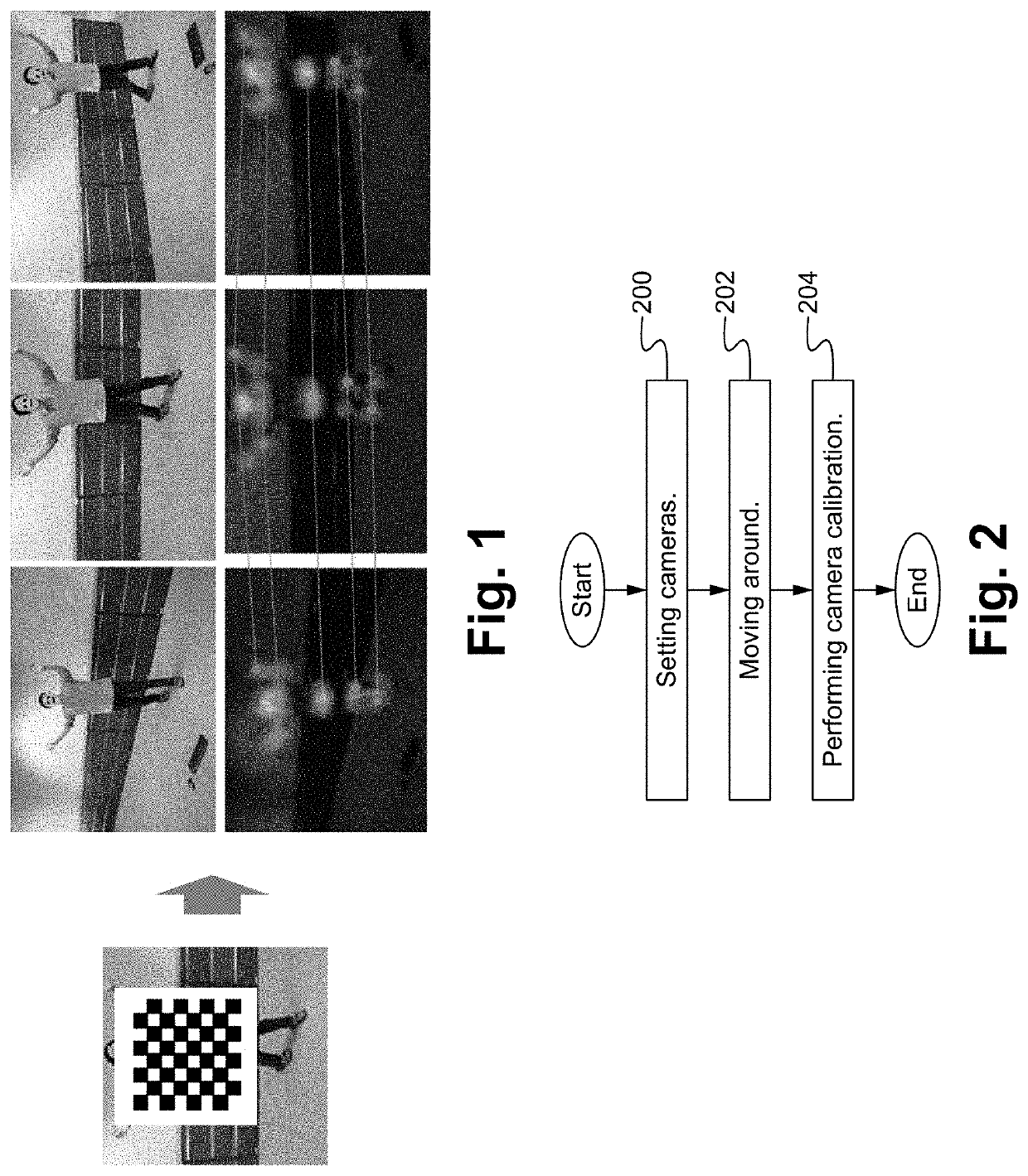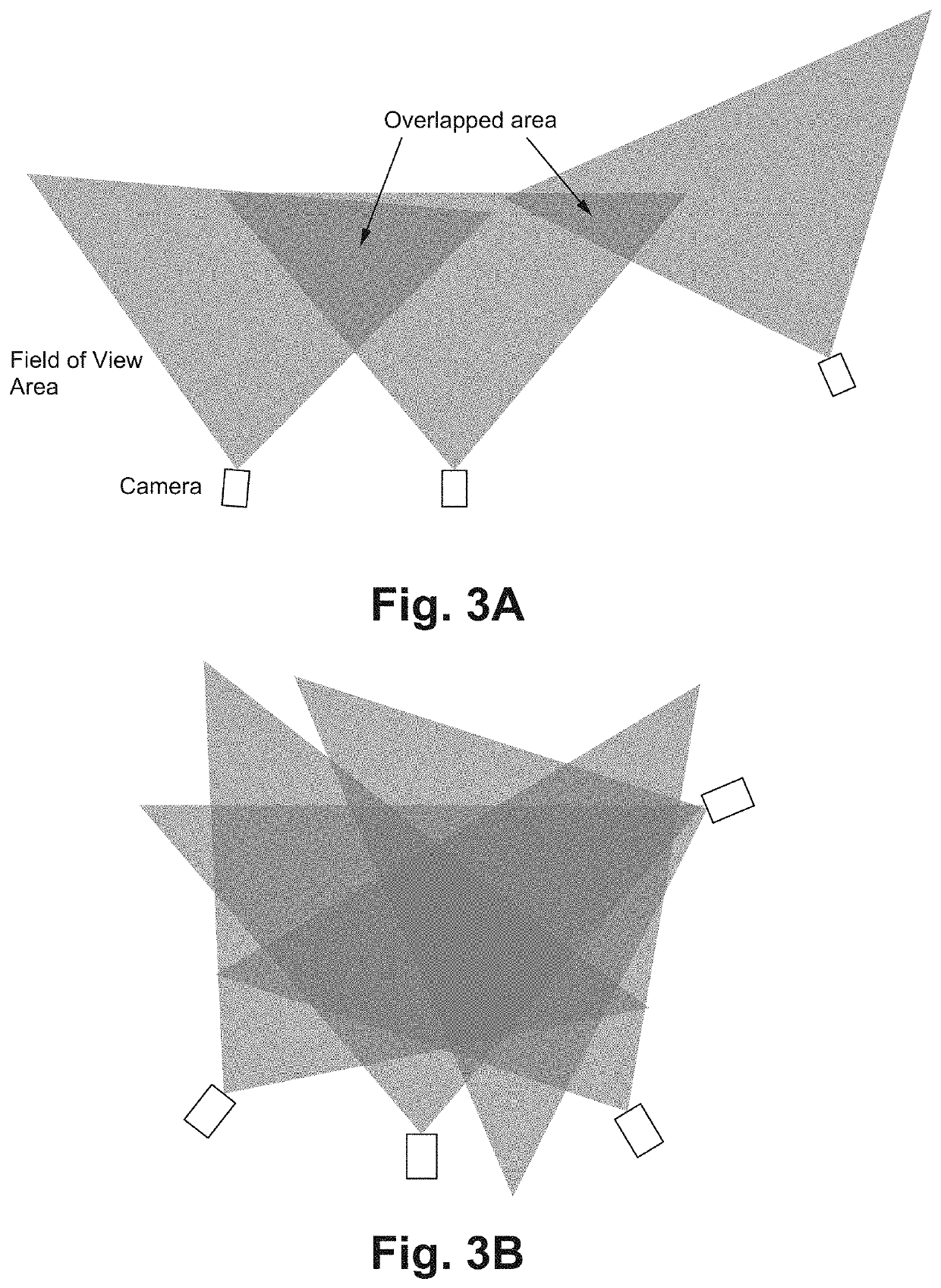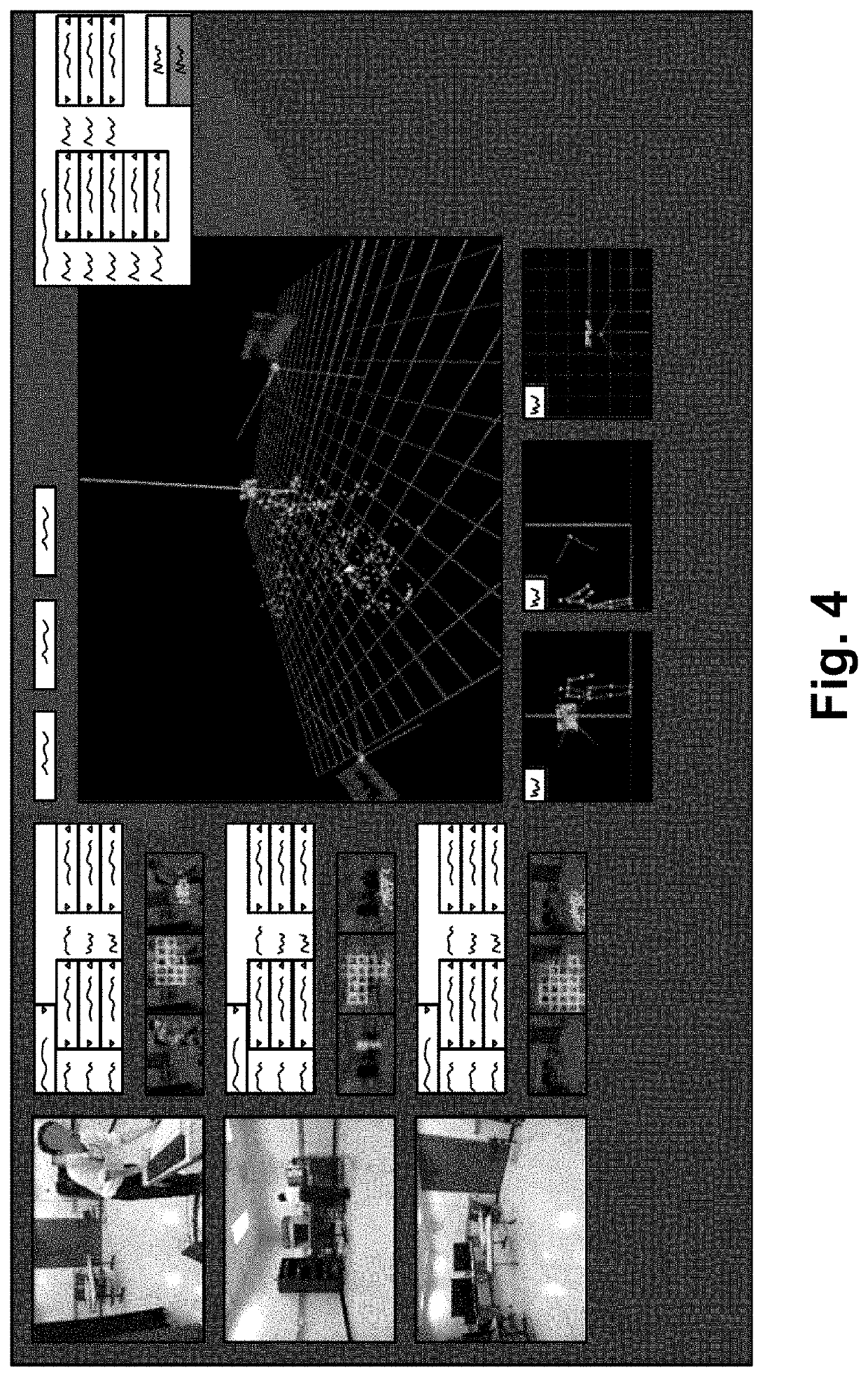Camera calibration method using human joint points
a human joint point and calibration method technology, applied in the field of cameras, can solve the problems of wasting a lot of time and general objects also suffering from matching problems, and achieve the effect of efficient computation cost and efficient computation cos
- Summary
- Abstract
- Description
- Claims
- Application Information
AI Technical Summary
Benefits of technology
Problems solved by technology
Method used
Image
Examples
Embodiment Construction
[0017]The multiple camera marker-less pose estimation does not need very accurate calibrations, compared with a volumetric application, such as performance capture. For example, practical investigations show that 10 cm errors are still acceptable. Thus, the novel method has been developed with much easier and lower accurate operation. The performance target is providing visually natural results in 3D pose estimation combined with easy camera calibration.
[0018]A focus of the method is using human joints as easy-matching keypoints. Recent progress in machine learning, especially deep learning, provides higher / confident human joint detectors. They detect human joint positions on an input 2D image by using a convolutional neural network. Detection performance and localization accuracy are drastically improved.
[0019]By using joint detection on each image, it is possible to collect well-matched, not-so-accurate, but many, keypoints.
[0020]FIG. 1 illustrates examples of using joints to dete...
PUM
 Login to View More
Login to View More Abstract
Description
Claims
Application Information
 Login to View More
Login to View More - R&D
- Intellectual Property
- Life Sciences
- Materials
- Tech Scout
- Unparalleled Data Quality
- Higher Quality Content
- 60% Fewer Hallucinations
Browse by: Latest US Patents, China's latest patents, Technical Efficacy Thesaurus, Application Domain, Technology Topic, Popular Technical Reports.
© 2025 PatSnap. All rights reserved.Legal|Privacy policy|Modern Slavery Act Transparency Statement|Sitemap|About US| Contact US: help@patsnap.com



